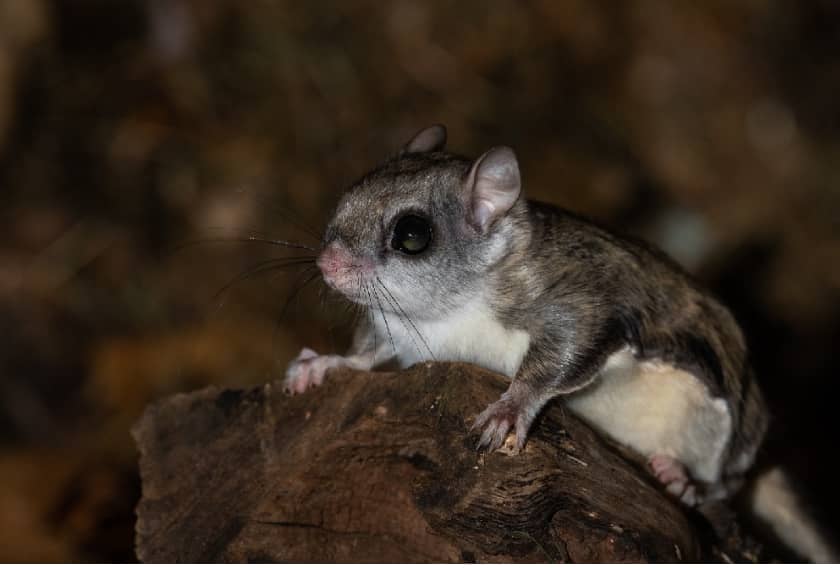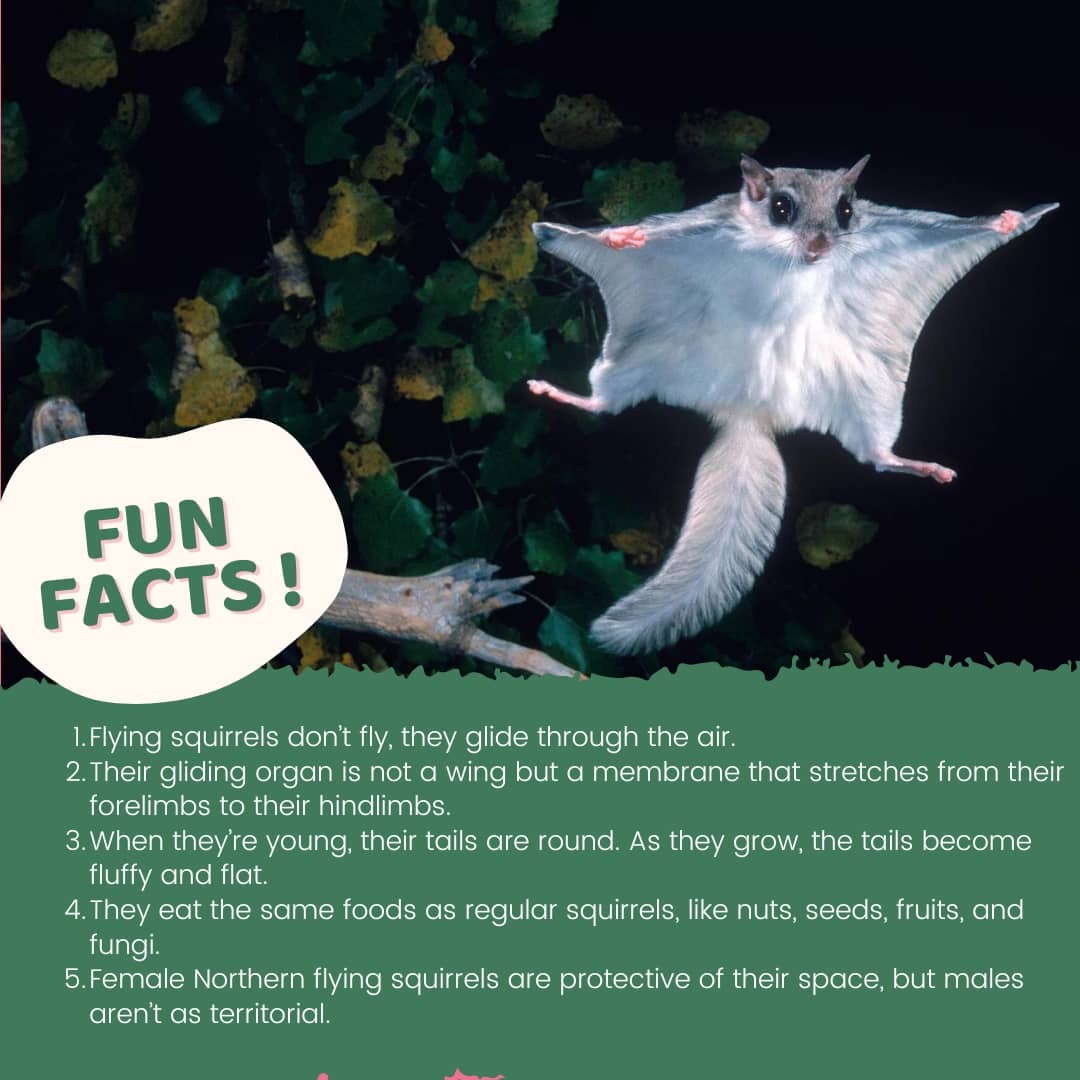Are flying squirrels a new trend in exotic pets, or have they been domesticated? Flying squirrels are small, tree-dwelling animals known for their ability to glide through the air. They have a special skin membrane called the patagium that stretches between their front and back legs, which enables them to glide from one tree to another.
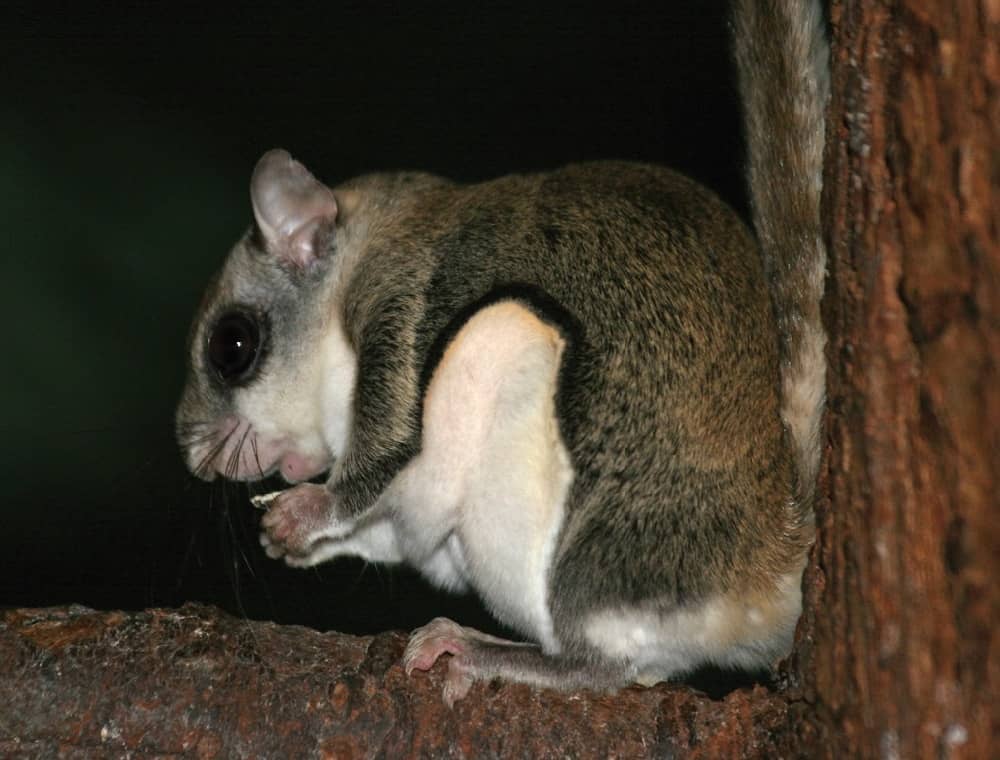
They are nocturnal, meaning they are active at night, and have large eyes that help them see in the dark. flying squirrels can cover more than 150 feet in a single glide.
Flying squirrels live in deciduous and coniferous forests and woodlands. They make their homes in snags, woodpecker holes, nest boxes, and abandoned nests of birds and other squirrels. Sometimes multiple squirrels will nest together to keep warm in the winter.
History, Classification, and Evolution of Flying Squirrels
History:
Flying squirrels have been around for millions of years. Their ancestor evolved during the late Eocene epoch, around 35 million years ago. They adapted to life in the trees by developing the ability to glide, which helped them evade predators and travel between trees in search of food.
Classification:
Flying squirrels belong to the family Suiuridae, which includes all squirrels. Within this family, they are part of the subfamily sciurillinae. There are several species of flying squirrels, and they are classified into two main genera: petauristas (large species found in Asia) and Glaucomys (smaller species found in the Americas)
Evolution:
Flying squirrels are believed to have evolved from tree squirrels between 31 and 25 million years ago, and possibly even earlier. Molecular studies indicate that flying Squirrels originated around 18–20 million years ago.
Diet
Flying squirrels are omnivores. Their diet consists of a variety of foods, including nuts, seeds, fruits, and mushrooms. They also eat insects and small birds’ eggs. In the wild, they store food to eat during the colder months when food is scarce.
Reproduction And Breeding
Flying squirrels usually breed twice a year. The female gives birth to 2-4 babies born without fur and closed eyes. The mother takes care of them in the nest until they are strong enough to grow and find food on their own. The babies usually stay with their mothers for about two months before becoming independent.
Health and well-being
Flying squirrels can stay healthy with the right care. They need a clean living space, a balanced diet, plenty of exercise, and regular visits to the vet, especially if kept as pets. They can get common rodent illnesses, so monitoring their health closely is important.
Conservation status
Most flying squirrels are endangered, but their habitats are at risk due to deforestation. Conservation efforts are focused on protecting the forests where they live to ensure their survival.
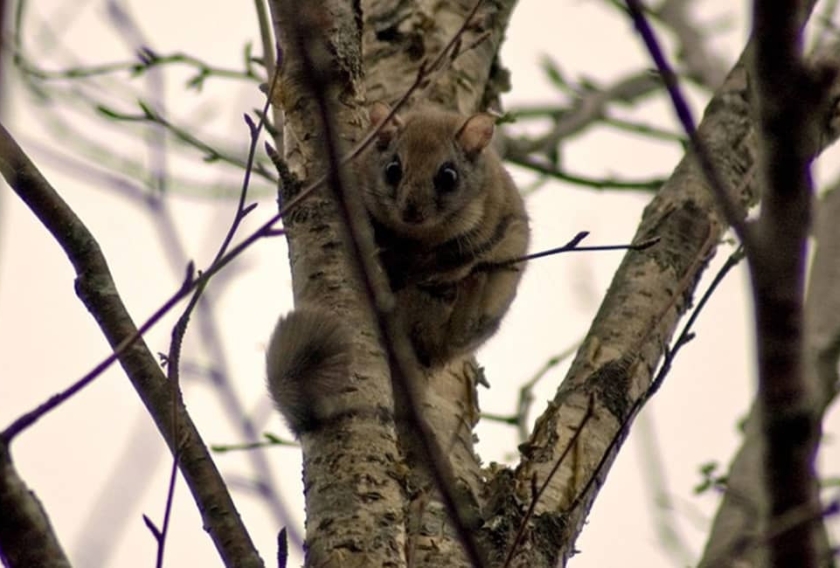
Distribution in some states
Flying squirrels are found in different states across the U.S., each hosting various species. For example, California is home to the western flying squirrel, while Pennsylvania and Michigan feature the Northern Flying Squirrel. The southern flying squirrel can be found in states like Georgia, Ohio, and North Carolina. Each of these regions provides a suitable habitat for these unique gliders, with their specific species adapted to local environmental conditions.
Behavioral adaptation
These squirrels are known for their incredible gliding ability, which is their most unique adaptation. They use a special membrane that stretches from their front to back limbs, allowing them to glide from tree to tree.
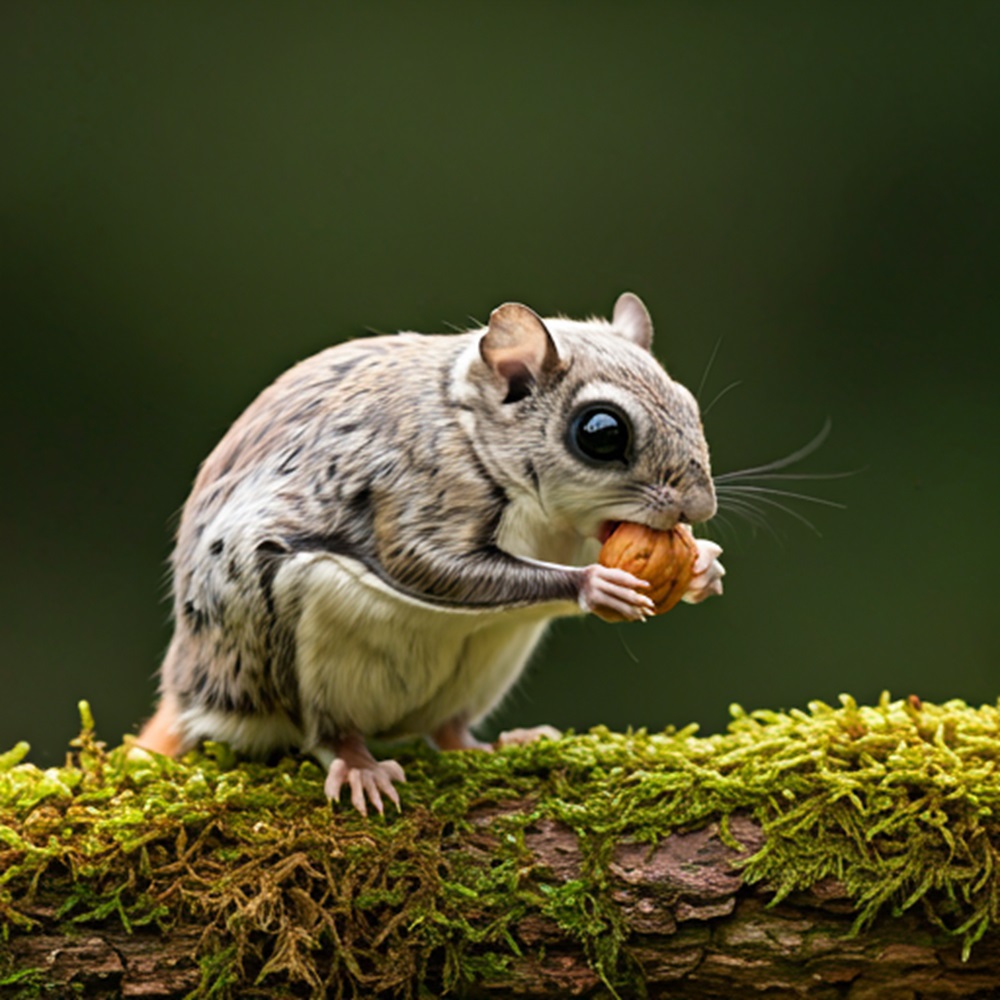
This helps them escape predators and find food in dense forests. Besides gliding, they have a sharp sense of excellent eyesight, acute hearing, a strong sense of smell, and heightened touch sensitivity. These abilities help them navigate their environment, find food, and avoid danger. Their adaptability to various forest habitats and their unique gliding ability make them fascinating creatures.
Different varieties of Flying Squirrels
There are more than 50 varieties of flying squirrels that have adapted themselves as per the climatic condition and flora and fauna of that place.
Northern flying squirrel
The Northern Flying Squirrel has a much patchier distribution but is found primarily in the northeast, along the west coast, and into Idaho and Montana. Northern flying squirrels are 10 to 12 inches long.
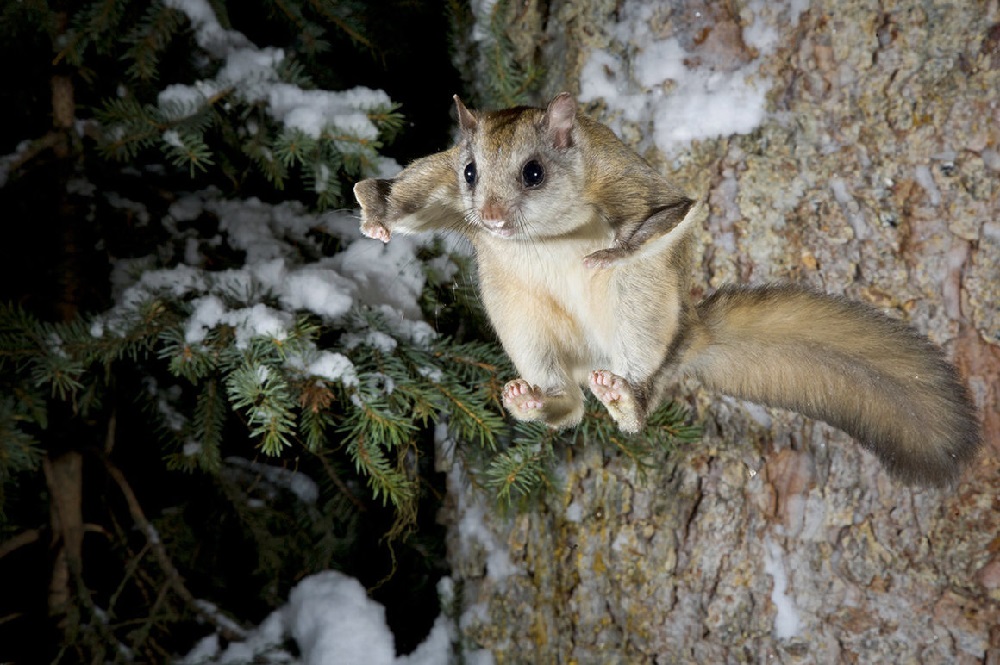
Southern flying Squirrel
The Southern Flying Squirrel is found throughout the eastern United States, from Maine south to Florida and west from Minnesota south to Texas. The southern species is smaller, about 8 to 10 inches in length.
Japanese flying squirrel
The Japanese flying squirrel inhabits sub-alpine forests and boreal evergreen forests in Japan, specifically on Honshu and Kyushu islands as well as Shikoku. These squirrels are known for their tiny size and big eyes.

Red giant flying squirrel
The red giant flying squirrel is found in South Asia, southern China, and Southeast Asia, Northern India and Pakistan, Java; and Taiwan. It is the largest flying squirrel in southeast Asia.
Are flying squirrels pests?
Yes, flying squirrels can become pests, especially when they enter homes. They are known to get into attics, where they can chew on insulation, wires, and wooden beams. This can cause significant damage to homes, and it’s important to prevent them from entering.
Interesting Facts About Flying Squirrels
Flying squirrels are interesting creatures, and there are some interesting facts associated with them:
- Flying squirrels don’t fly, they glide through the air.
- Their gliding organ is not a wing but a membrane that stretches from their forelimbs to their hindlimbs.
- When they’re young, their tails are round. As they grow, the tails become fluffy and flat.
- They eat the same foods as regular squirrels, like nuts, seeds, fruits, and fungi.
- Female Northern flying squirrels are protective of their space, but males aren’t as territorial.
- They usually live for about four years.
- They can start having babies when they’re about one year old.
- They have excellent eyesight, hearing, and a strong sense of smell, and they are very sensitive to touch.
- Northern flying squirrels like to build their nests high up in trees.
Frequently Asked Questions
Question 1: What is the longest lifespan of a flying squirrel?
Answer: Flying squirrels can live up to 10 years in the wild and live even longer in captivity, with some reaching up to 15 years.
Question 2: Can you potty train a flying squirrel?
Answer: No, flying squirrels can’t be potty trained. They tend to relieve themselves wherever they are.
Question 3: Do flying squirrels fake death?
Answer: Some flying squirrels may pretend to be dead when they feel threatened, which is a defense mechanism to avoid predators.
Question 4: Where can I buy a flying squirrel?
Answer: Flying squirrels can be purchased from licensed exotic pet breeders. However, it’s important to check local laws, as they are illegal to keep as pets in some states
Question 5: What is another name for a flying squirrel?
Answer: Flying squirrels are also called “gliding squirrels “due to their ability to glide through the air.
Question 6: Can flying squirrels have spinach?
Answer: Yes, flying squirrels can eat spinach, but only in small amounts. It’s healthy but can affect calcium absorption if given too much. Mix it with other foods for a balanced diet.
Question 7: Can flying squirrels eat cranberries?
Answer: Yes, flying squirrels can eat cranberries. They‘re good treats and provide vitamins, but they should be given in moderation due to their natural sugar content.
Question 8: Is honey good for flying squirrels?
Answer: Honey is okay for flying squirrels as an occasion treat, but only in small amounts due to its high sugar content.
Conclusion
Flying squirrels are unique exotic pets that glide rather than fly, using a special membrane between their limbs. They have sharp senses, are highly sensitive to touch, and need plenty of space to glide. Their care requires a specific diet, attention to their health, and proper housing. All the pros and cons of keeping flying squirrels should be well-understood before bringing them home. Female flying squirrels can be territorial, and they are fascinating pets, they require careful attention and commitment to keep them healthy and happy.

